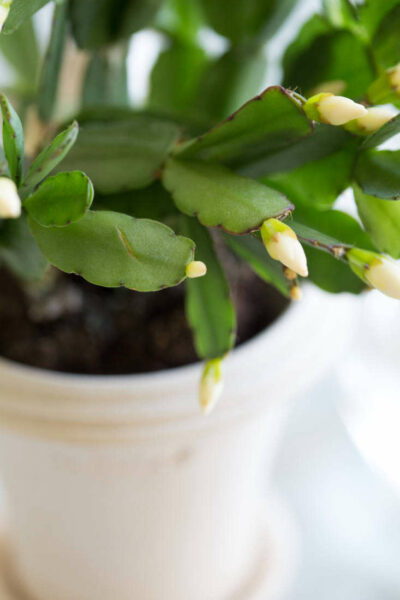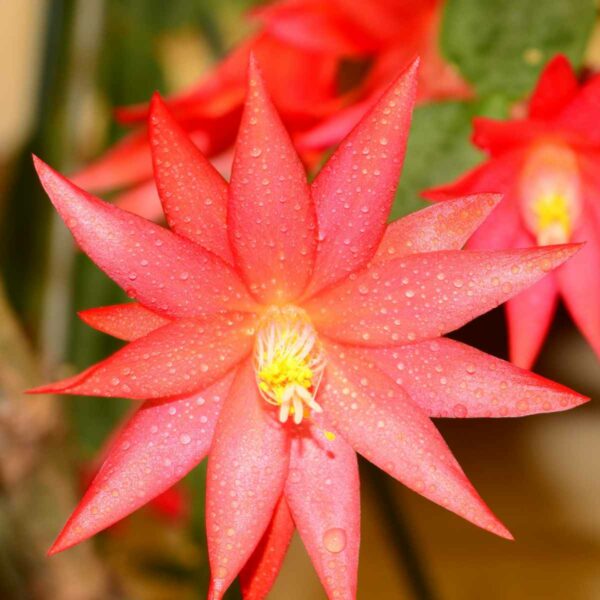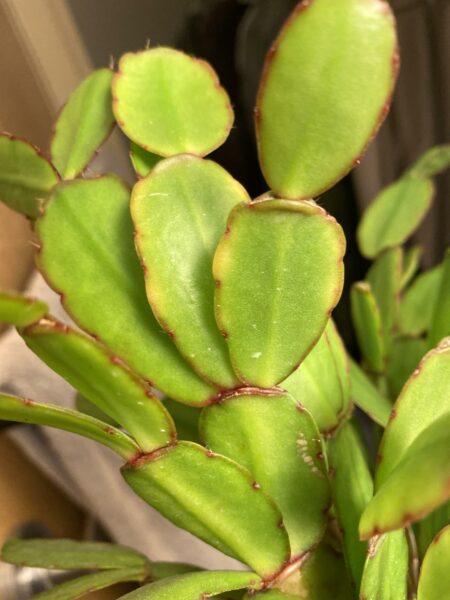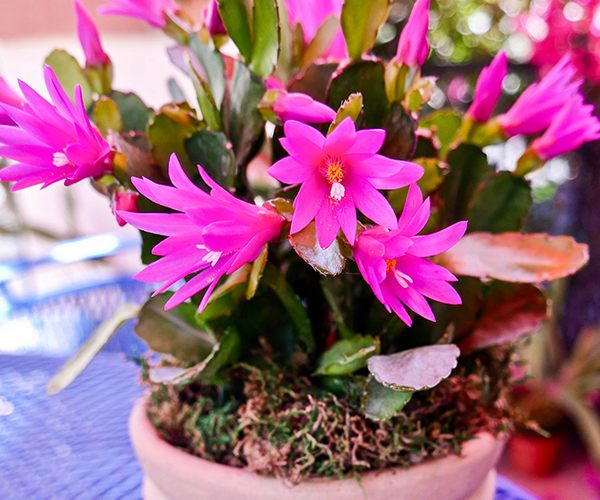Easter Cactus Care: Easter Cactus Growing Guide

A succulent that is incredibly simple to grow is the Easter cactus. It does, however, need a little bit more maintenance than other native US cacti species. This post will cover every stage of caring for Easter cacti, from planting to harvest.
Therefore, whether you already own an easter cactus or are considering purchasing one, we will teach you everything you need to know about caring for this holiday cactus variety. I’ll go over everything you need to know to maintain the health and happiness of your easter cactus, from watering to fertilizing.
Where to Place Your Easter Cactus

There are a few things to think about when deciding where to put your Easter cactus. First of all, these cacti prefer direct, bright light. Cacti will not bloom as profusely, but they can survive lower light levels. Second, they prefer a dry environment, so wait until the soil is fully dry in between waterings. Third, they prefer a cool environment, so avoid placing them in a heated environment.
Ideally, your Easter cactus should be placed in a window that faces south or west. It will also work if you have a window that faces east and is well-lit. Just be sure to shield the foliage of your Cactus from the intense afternoon sun.
You can put your Easter cactus under fluorescent lights if your house doesn’t have any windows with natural light. The light fixture should be positioned about 12 inches above the plant, and it should be left on for 12 to 16 hours per day.
Easter Cacti Care: Watering and Fertilizing

The gorgeous Easter cactus (Rhipsalidopsis gaertneri) blooms in the late winter or early spring. Beautiful flowers in colors pink, red, and white are produced when it blooms.
Being a succulent, the Easter cactus doesn’t require a lot of water for growing. In actuality, a plant may suffer from having too much water. When the soil feels dry to the touch, water the cactus. Use a pot with drainage holes or fill the bottom of the pot with gravel to ensure drainage.
- Every two weeks, fertilize your Easter cactus with a balanced fertilizer of 10-10-10. Apply the fertilizer at half the suggested strength and be sure to adhere to the instructions on the fertilizer container.
- Easter cactus thrives in direct, bright light. The leaves will begin to turn red if the plant is exposed to direct sunshine. The plant won’t blossom if it receives too much shadow.
- Keep the plant dry and cool (between 50- and 60 degrees Fahrenheit) during the fall and winter to promote blooming. To achieve this, keep the plant away from heat sources, and water it less frequently. When you notice buds growing in the spring, boost watering and relocate the plant to a warmer area.
With proper care, your Easter cactus will bloom year after year.
Pruning and Propagation for Schlumbergera Gaertneri or Easter Cactus

The Easter cactus (Rhipsalidopsis gaertneri) is a beautiful houseplant that produces dazzling blooms in shades of pink, red, or white. This popular plant is closely related to the Christmas cactus and shares many of the same similar requirements.
Easter cacti are native to Brazil and thrive in humid conditions. They are commonly grown as houseplants and do best in bright, indirect light. Easter cacti can be tricky to grow, but with a little patience and the right conditions, they will reward you with years of beautiful blooms.
The key to successful Easter cactus care is understanding the plant’s natural growth cycle. Easter cacti bloom best when they are allowed to rest for at least two months before being watered and fertilized again. This resting period mimics the plant’s natural dormancy period and encourages abundant blooming.
- To promote healthy growth and prevent your Easter cactus from becoming leggy, it’s important to prune the plant regularly. You can prune your Easter cactus anytime it is not actively blooming.
- Use sharp, clean pruning shears to remove any dead or damaged stems. You can also trim back leggy stems to encourage compact, bushy growth.
- Easter cacti can be propagated from stem cuttings taken from good plants. To take a cutting, use sharp, clean pruning shears to cut a 3-4 inch (7.6-10 cm) piece from a good stem.
- Allow the cutting to callus for a few days before planting it in a well-draining cactus potting mix container in your home. Water the soil and place the pot in a warm, sunny location.
- Keep the soil moist but not soggy until the cutting has rooted, which can take several weeks.
Common Problems Faced by Easter Cactus

Easter cacti are beautiful, long-lasting plants that are easy to care for in your home. However, they can sometimes experience problems. Here are some of the most common problems with Easter cacti and how to solve them.
- Yellowing leaves. This is usually a sign of too much water. Allow the soil to dry out completely before watering again.
- Browning leaves. This is usually a sign of too little water. Water more frequently, making sure the soil is evenly moist.
- Soft or mushy stems. This is usually a sign of too much water. Allow the soil to dry out completely before watering again. If the problem persists, try using a well-draining potting mix.
- Drooping stems. This is usually a sign of too little water. Water more frequently, making sure the soil is evenly moist. If the problem persists, try moving the plant to a brighter location.
- Slow growth. This is normal, especially in the winter months. Easter cacti need very little water during the winter, so be sure not to overwater.
- Brown spots on the stems. This is usually a sign of sunburn. Move the plant to a shadier location in your home and make sure it is not in direct sunlight for long periods of time.
- White powdery substance on the leaves. This is powdery mildew and is caused by too much moisture on the leaves. Allow the plant to dry out completely and increase air circulation around the plant.
Fertilizing Grow Guide for Easter Cactus

The Easter cactus, Schlumbergera truncata, is a special kind of cactus that blooms during the Easter season. This cactus is easy to care for and only needs to be fertilized once a month.
- To fertilize your Easter cactus, use a water-soluble 20-20-20 fertilizer. Sprinkle the fertilizer over the soil and then water the plant well. You can also feed your cacti with an organic fertilizer such as fish emulsion or worm castings. Once a year, in the spring, you can give your cactus a complete fertilizer such as 10-10-10.
- Easter cacti need bright, indirect sunlight. If you have a sunny window, place the cacti in it. If you don’t have a sunny window, place the cactus near a bright lamp.
- In the summer, when the weather is hot and your cacti are in bloom, you can place them outdoors in a shady spot. Make sure to bring the cactus indoors before the weather turns cold in the fall.
- Water your Easter cacti when the soil feels dry to the touch. Don’t water the cactus every day; once a week is often enough.
Repotting the Easter Cactus

Easter cacti (schlumbergera gaertneri) are known for their beautiful blooms that appear in shades of pink, red, and white. These lovely plants are native to Brazil and thrive in humid, warm climates. If you live in a cooler climate, you can still enjoy an Easter cactus by growing cactus indoors.
- Easter cacti are relatively easy to look for, but they do need to be repotted every two to three years. When repotting an Easter cactus, be sure to use a well-draining potting mix and a pot that is only slightly larger than the existing one. This will help to prevent the roots from rotting.
- When you are ready to repot your Easter cacti, carefully remove the cactus from its current pot. Gently loosen the roots and remove any dead or decaying roots. Place the plant in its new pot and fill in around the roots with potting mix. Water the plant well and place it in a bright, filtered light location.
- Easter cacti are beautiful plants that make wonderful additions to any indoor garden. By repotting cactus every few years, you can keep them blooming for many years to come.
In conclusion, Easter cactus are easy to care for so long as you remember to repot them every few years and give them plenty of bright, filtered light. By following these simple tips, you can enjoy their beautiful blooms for many years to come.
